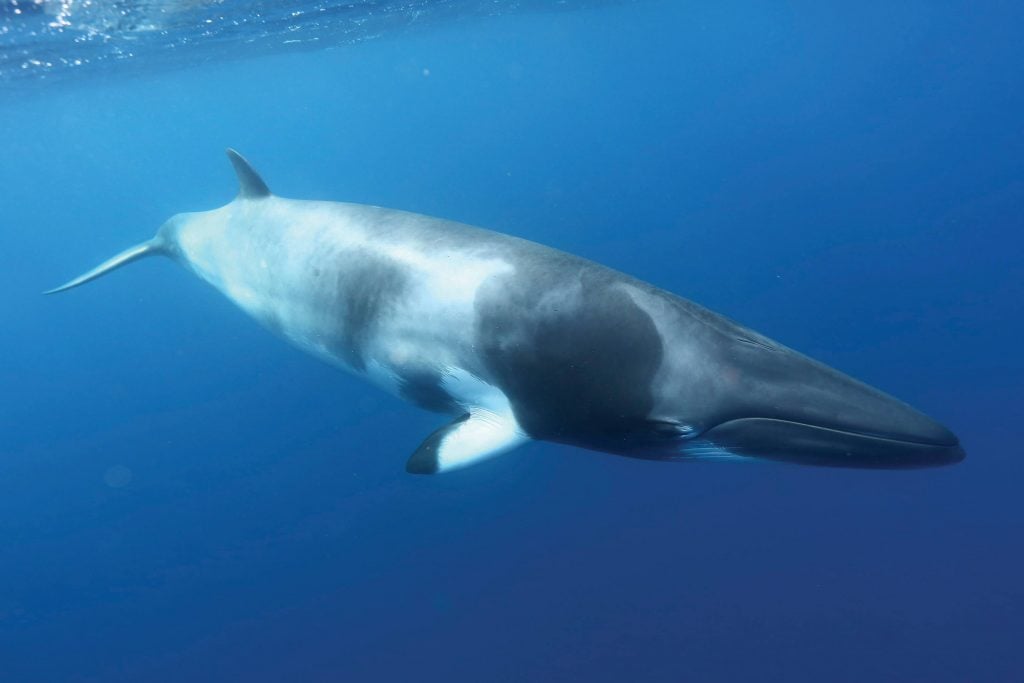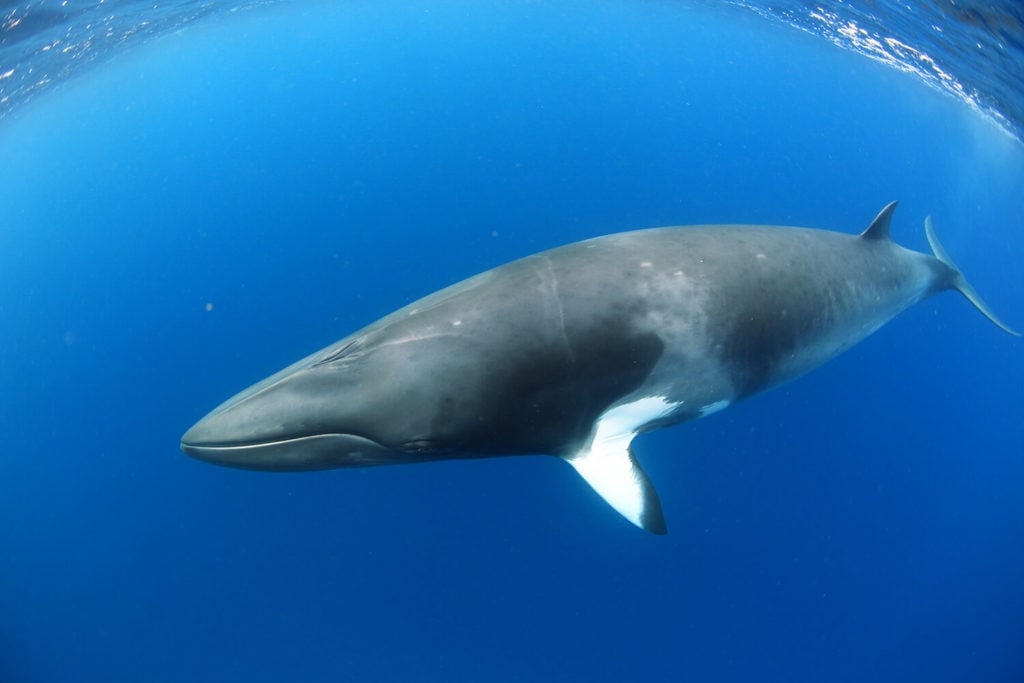TNQ Writer
The Great Barrier Reef is the only place in the world that you can swim with dwarf minke whales: an experience so exclusive it only happens for two months of the year and only in Tropical North Queensland.
With an ocean that can feel as vast as space, it’s no surprise that an interaction with a dwarf minke whale can feel as otherworldly as a scene from Star Wars. Clinging to a rope armed with a mask and snorkel, a mechanical sound nicknamed the ‘Star Wars sound’ reverberates through your entire body as an almost fluorescent body glides past you reflecting the sunlight above.
While you may not feel like the word dwarf aptly describes the creature that dwarfs you in comparison, these whales – up to eight metres long and almost six tonnes heavy – are almost two metres smaller than their other minke whale cousins. Minke whales are among the smallest baleen whale species and it wasn’t until the 1980s that scientists recognised the different species of minkes, including the dwarf minke subspecies. Through acoustic monitoring, scientists were able to differentiate the sounds of the dwarfs from the other minke species, further reinforcing their subclassification.

The purest white underside contrasts with deep blue shades of the coral sea
Little is still known about the pocket-sized whale, but the Great Barrier Reef is the only known predictable aggregation in the world and the only place where people are able to swim alongside this majestic creature. It is believed the population arrive annually between Port Douglas and Lizard Island from subantarctic waters, via migration along Australia’s east coast, however research is still underway to understand their migratory patterns.
One thing that is understood is their inherently curious nature, actively seeking out and maintaining long contact with vessels in the water. A small number of tour boats operate under a special licence that offers divers and snorkelers the rare privilege of interacting with the little whales. Interactions are purely dictated by the minkes, with boat engines cut and set adrift when a pod is spotted. Swimmers entering the water must maintain contact with a rope trailing from the boat and await the inquisitive whales, who seem to enjoy showing off and typically come to investigate. Mike Ball Minke Whale Dive Expeditions claim a 98% success rate, with the longest encounter lasting 10 hours and the largest pod consisting of 28 whales. If your expedition doesn’t encounter these friendly animals, the Ribbon Reefs are noted as one of Tropical North Queensland’s best dive sights so you can explore the other animal and coral life that make Barrier Reef great.

A dwarf minke whale sky-hop behaviour
Sometimes likened to a dolphin, dwarf minkes are highly manoeuvrable and acrobatic and are known to occasionally breach. If you’re lucky you may witness uncommon behaviours such as a headrise, where the whale rises vertically, exposing its snout above the surface; or the spy-hop, the same move but with its eyes above the surface. Sometimes they will lateral roll and display their bellies which gives an opportunity to determine the sex of the whale. Such information is important for ongoing research and divers are encouraged to contribute any photos or observations to the Minke Whale Project. Each dwarf exhibits its own unique colouring and markings as distinctive as a human fingerprint, which allows researchers to follow the behaviours of individual whales.

Unique markings of a dwarf minke whale
There’s still a lot to learn about the not-so-little dwarfs and all who get the privilege of an encounter can contribute to the future understanding of these gentle mammals. Liveaboard expeditions leave from Cairns to the Ribbon Reefs in June and July, typically for 3 to 7 days, with Mike Ball Dive Expeditions, Divers Den or Pro Dive. The expeditions provide a dedicated itinerary for minke whale interactions and offer an exclusive in-water experience unlike any other. While you can scuba dive, most interactions occur with snorkelers, making this once-in-a-lifetime opportunity accessible for all. Imagine the goosebumps moment when a creature around four-times your size comes within mere metres of contact – a moment so incredible it will stick with you for life.












